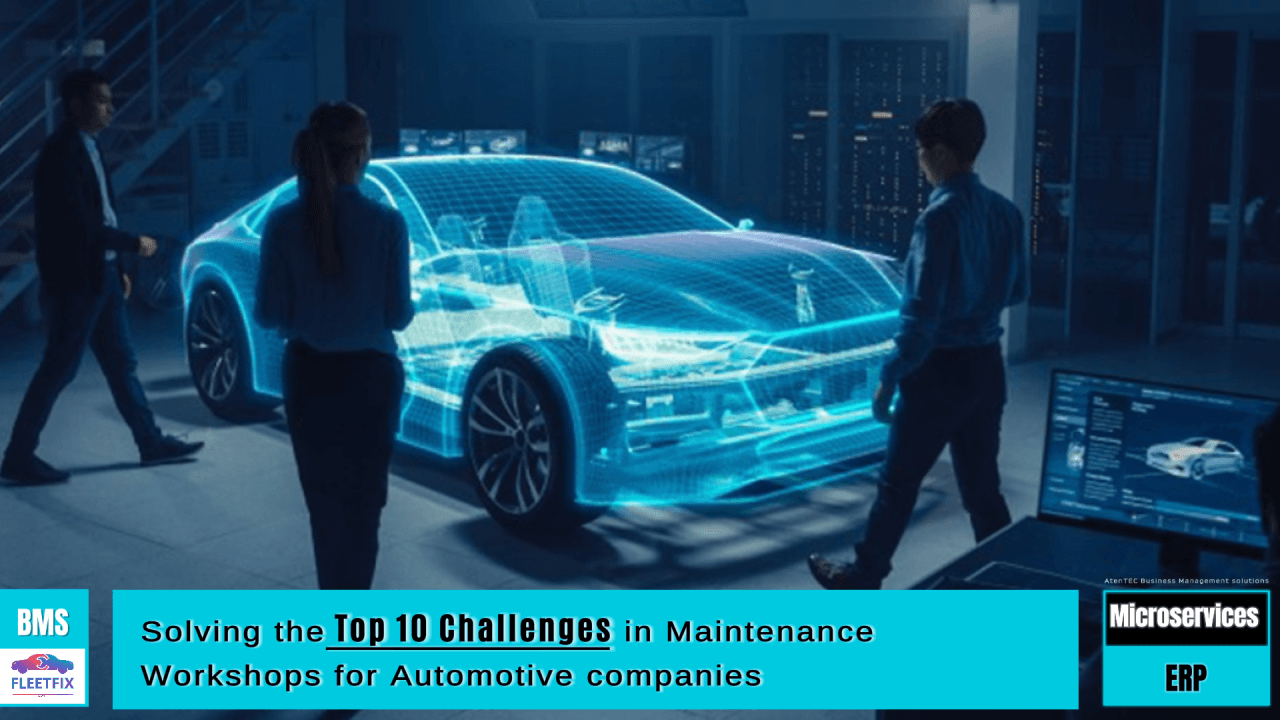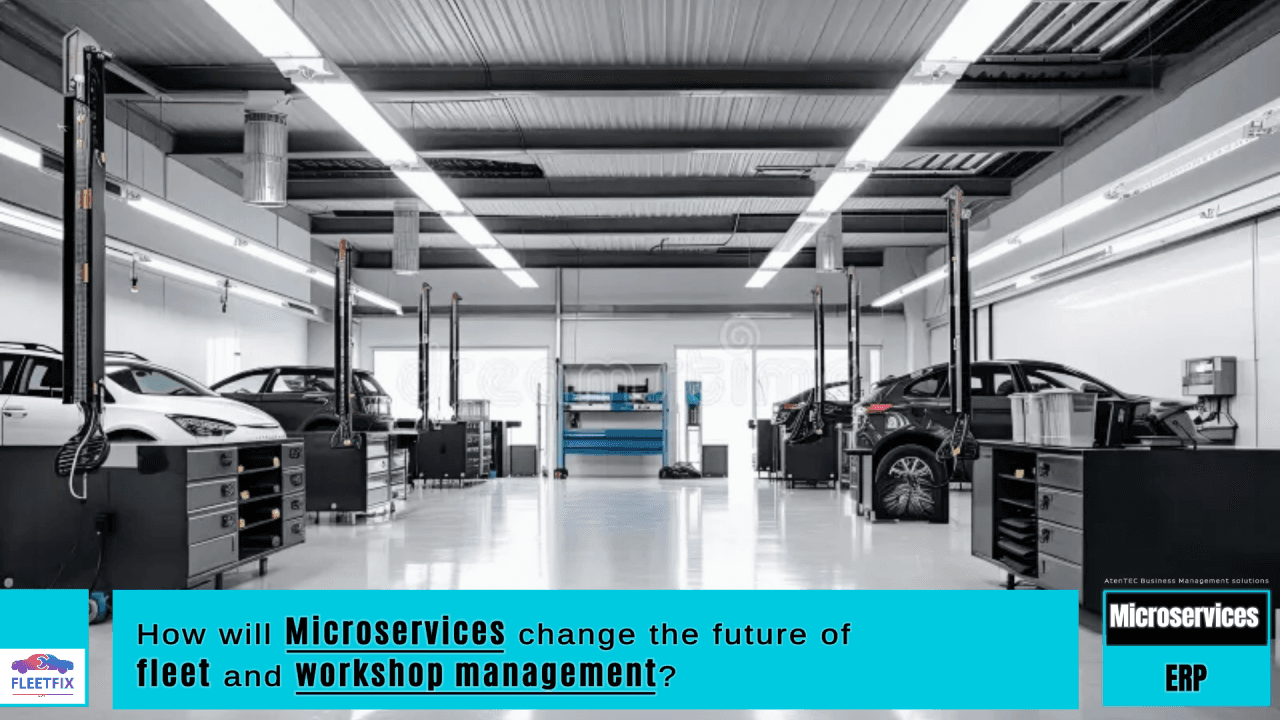Traditional ERP vs. Microservices-Based ERP – Why the Shift Is Critical for Auto Repair Shops?
Is Your ERP System Holding Your Workshop Back?
Auto repair workshops and fleet maintenance centers have relied on traditional monolithic ERP systems to manage work orders, inventory, and invoicing for years.
While these systems were once considered essential, they now pose significant operational challenges:
- Limited Scalability – Expanding or adding new services is complicated.
- Rigid Architecture – Customizing workflows to fit workshop needs is difficult.
- Slow System Performance – Large data loads cause system-wide slowdowns.
- Integration Issues – Connecting with AI-driven diagnostics, IoT, and cloud analytics is a nightmare.
The solution? Microservices-based ERP systems like Aten FleetFix that offer greater flexibility, speed, and efficiency!
Key Differences: Traditional ERP vs. Microservices-Based ERP
| Traditional Monolithic ERP | Features | Microservices-Based ERP (Aten FleetFix) |
|---|---|---|
| Requires full system overhaul to expand | System Scalability | Modular, allowing easy expansion |
| Limited flexibility | Customization | Fully customizable per workshop needs |
| Slows down as data grows | Performance | Fast and responsive even with high workloads |
| Updating one module can disrupt the entire system | System Updates | Each module updates independently with zero downtime |
| Difficult and costly | Integration | Seamless API integration with IoT, AI, and analytics |
The Verdict: Microservices enable a faster, more adaptable, and future-proof workshop management system.
How Microservices Outperform Traditional ERP Systems
1. No More System-Wide Failures – Independent Services Keep Operations Running
Traditional ERPs create a single interconnected system, meaning one module failure can crash the entire software.
With Aten FleetFix, each function (work orders, inventory, invoicing, etc.) operates independently, ensuring continuous uptime.
Impact:
- 50% fewer system crashes and IT-related disruptions
- Workshops operate with near-zero downtime, even during updates
2. Faster Work Order Processing & Technician Efficiency
In monolithic systems, a single delay in one module slows down all operations.
Microservices-based workflows ensure technicians receive real-time task assignments, updates, and approvals.
Impact:
- 40% faster work order completion through automated technician allocation
- Improved productivity, reducing idle technician time by 30%
3. Smarter Inventory Management with Automated Reordering
Traditional ERP inventory modules lack real-time updates, leading to overstocking, shortages, and operational delays.
Aten FleetFix’s inventory microservice ensures:
- Real-time stock updates
- Automatic reorder triggers
- Integration with suppliers for streamlined procurement
Impact:
- 30% reduction in wasted inventory
- 60% faster access to spare parts, enabling quicker repairs
4. Future-Proof Integrations – AI, IoT, and Cloud Connectivity
Traditional ERPs struggle to integrate predictive maintenance tools, telematics, and fleet analytics.
Microservices enable direct API connections, allowing workshops to stay connected and future-ready.
Impact:
- 40% improvement in predictive maintenance accuracy
- Reduced unplanned breakdowns, increasing vehicle uptime
5. Better Customer Experience & Service Transparency
Customers expect real-time updates on their vehicle repairs, something traditional ERPs cannot provide efficiently.
With Aten FleetFix, customers receive transparency and digital engagement.
Impact:
- 35% increase in customer retention due to improved transparency
- 50% reduction in status inquiry calls, freeing up staff time
Why Should Automotive Businesses Upgrade to Microservices ERP?
If your workshop still relies on a traditional ERP, now is the time to switch to a Microservices-based system like Aten FleetFix to:
- Eliminate slowdowns and downtime
- Improve work order efficiency and technician productivity
- Automate inventory and spare parts management
- Seamlessly integrate AI-driven analytics and IoT solutions
- Enhance customer experience through digital automation
The future of auto repair management is modular, scalable, and automated.
Are you ready to embrace it?





